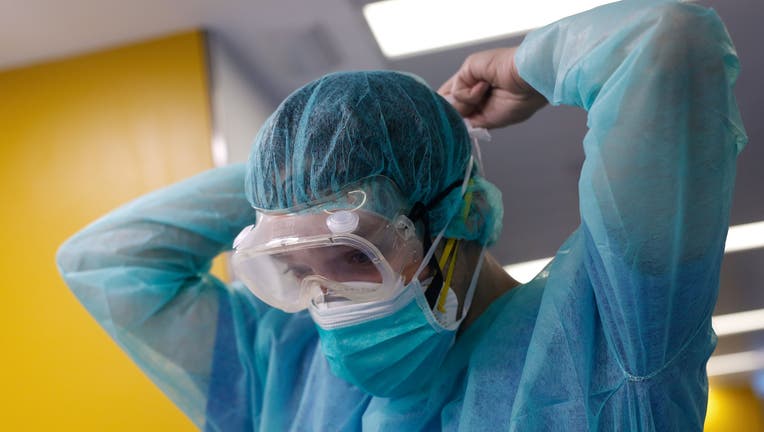Report: University of Florida researchers find coronavirus in collected aerosols, showing it could be airborne

Photo by PAU BARRENA / AFP
GAINESVILLE, Fla. - Researchers at the University of Florida have found particles of coronavirus in aerosols collected, contributing to findings that the virus could airborne, a report says.
According to the New York Times, a research team at the University of Florida successfully isolated the live virus from aerosols collected at a distance of seven to 16 feet from patients hospitalized with COVID-19. That is farther than the six-feet recommended in social distancing guidelines.
However, it was not clear if the amount of the virus recovered was enough to cause infection. The report said that droplets can be damaged as they travel.
MORE NEWS: Companies test antibody drugs to help treat and prevent coronavirus ahead of a vaccine
Another study by the University of Nebraska Medical Center (UNMC), the National Strategic Research Institute at the University of Nebraska, and others, found genetic material from the virus that causes COVID-19 in air samples from both in and outside of confirmed coronavirus patients’ rooms.
These findings offered “limited evidence that some potential for airborne transmission exists," researchers said. However, they warned that the findings do not confirm airborne spread.
Researchers took air and surface samples from 11 patients’ rooms during the initial isolation of 13 people who tested positive for COVID-19. The researchers found virus genetic material on commonly used items, such as toilets, but also in air samples, thus indicating that “SARS-CoV-2 is widely disseminated in the environment.” (SARS-CoV-2 is the name of the virus that causes COVID-19.)
Not only was the virus detected within COVID-19 patients’ rooms, “air samplers from hallways outside of rooms where [the] staff was moving in and out of doors were also positive,” they wrote.
“These findings indicate that disease might be spread through both direct (droplet and person-to-person) as well as indirect contact (contaminated objects and airborne transmission) and suggests airborne isolation precautions could be appropriate,” they concluded, noting that the findings also suggest that COVID-19 patients, even those who are only mildly ill, “may create aerosols of virus and contaminate surfaces that may pose a risk for transmission.”
MORE NEWS: WHO: Avoid dental cleanings and other routine visits to the dentist for now
Scientists are still working to understand how the novel virus transmits, though the Centers for Disease Control and Prevention (CDC) says that it mainly spreads via person-to-person, such as when an infected person coughs or sneezes. Their respiratory droplets could then land in the noses and mouths of other people close by (hence why officials are urging people to stay at least six feet away from one another when in public). Touching a contaminated object — recent studies have found the virus can live on surfaces between hours and days — and then touching your eyes, nose or face with dirty hands is also a possibility.
Tune in to FOX 35 Orlando for the latest Central Florida news.
FOX News contributed to this report.

